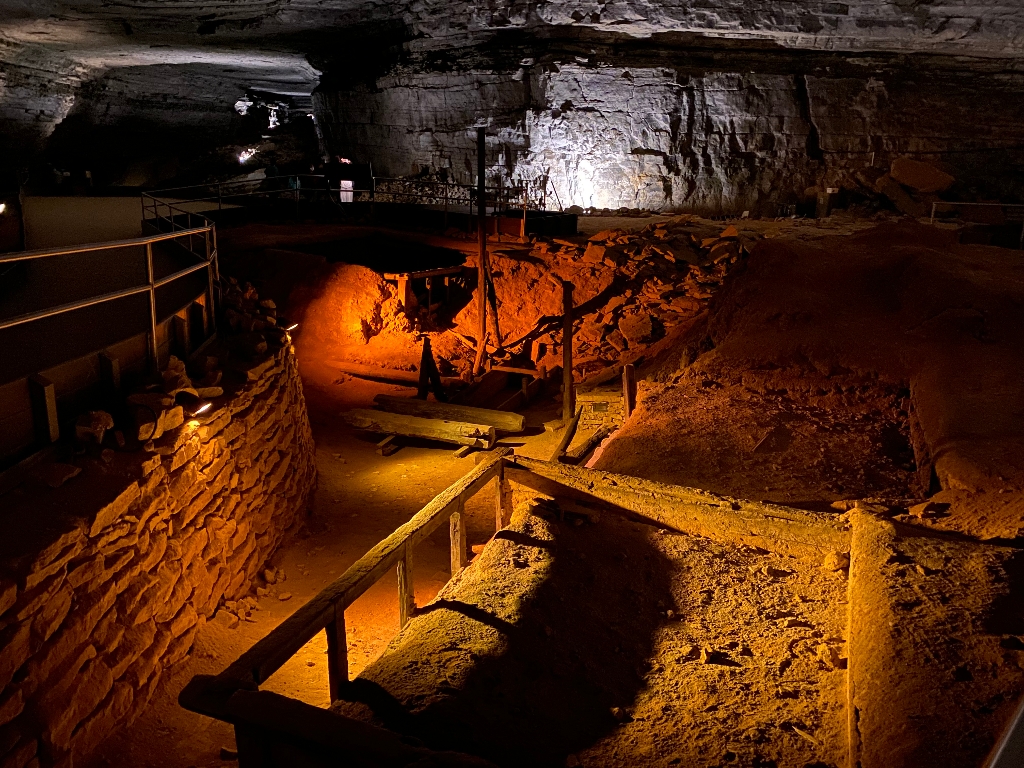
In the center of the room there are three large square boxes and the remaining scaffolding where a holding tank once stood. Early settlers who entered the cave discovered the sediment was rich in calcium nitrate, a mineral that sparks when exposed to a flame. They figured out how to process the soil on a large scale by gathering dirt in these boxes. They engineered a piping system from hollowed out tulip poplar logs, sharpening one end, and forcing it into the blunted end of the next log. Pipes carried water from the waterfall at the entrance of the cave to these leeching vats. The water slowly seeped through the layers of dirt, pulling with it the nitrates from the soil. The muddy solution would travel through the filter made by the interlocking logs at the bottom, separating debris from the nitrate rich water. The mixture was piped to the surface and placed in large cauldrons where workers would add some ingredients and then boil it down until all that was left was a crystal known as saltpetre. This crystal is the number one ingredient of black gun powder. America was still young at the time of this operation and the saltpetre created here became very important during the War of 1812. By the end of the war in 1815, America had maintained its freedom. Unfortunately, the majority of the workers in the saltpetre production were enslaved men who would not reap the benefit of freedom for themselves.
With the end of saltpetre production a new means of industry would develop here at Mammoth Cave. A steel door was installed in the Houchin’s Narrows barring entry. Curious bystanders would now need to purchase a ticket to gain entry into the darkness. Parties were led by local guides that had knowledge of the cave. By 1816, tourism would become the new business model for Mammoth Cave. What do you think it was like for those early visitors?
Is there something we missed for this itinerary?
Itineraries across USA


















































